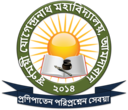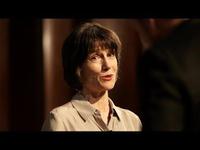Amazing Indians - Physics Scientist - Satyendra Nath Bose
3483 views
Satyendra Nath Bose (Bengali: সত্যেন্দ্র নাথ বসু Shottendronath Boshū, ( January 1894 – 4 February 1974) was an Indian physicist specialising in mathematical physics. He was born in Calcutta. He is best known for his work on quantum mechanics in the early 1920s, providing the foundation for Bose–Einstein statistics and the theory of the Bose–Einstein condensate. A Fellow of the Royal Society, he was awarded India's second highest civilian award, the Padma Vibhushan in 1954 by the Government of India.
The class of particles that obey Bose–Einstein statistics, bosons, was named after him by Paul Dirac.
A self-taught scholar and a polyglot, he had a wide range of interests in varied fields including physics, mathematics, chemistry, biology, mineralogy, philosophy, arts, literature and music. He served on many research and development committees in independent India.
Bose was born in Calcutta (now Kolkata), India, the eldest of seven children. He was the only son, with six sisters after him. His ancestral home was in village Bara Jagulia, in the district of Nadia, in the district of West Bengal. His schooling began at the age of five, near his home. When his family moved to Goabagan, he was admitted to the New Indian School. In the final year of school, he was admitted to the Hindu School. He passed his entrance examination (matriculation) in 1909 and stood fifth in the order of merit. He next joined the intermediate science course at the Presidency College, Calcutta, where he was taught by illustrious teachers such as Jagadish Chandra Bose, Sarada Prasanna Das, and Prafulla Chandra Ray.
As a polyglot, he was well versed in several languages such as Bengali, English, French, German and Sanskrit as well as the poetry of Lord Tennyson, Rabindranath Tagore and Kalidasa. He could also play the esraj, a musical instrument similar to a violin. He was actively involved in running night schools that came to be known as the Working Men's Institute
Satyendra Nath Bose, along with Saha, presented several papers in theoretical physics and pure mathematics from 1918 onwards. In 1924, while working as a Reader (Professor without a chair) at the Physics Department of the University of Dhaka, Bose wrote a paper deriving Planck's quantum radiation law without any reference to classical physics by using a novel way of counting states with identical particles. This paper was seminal in creating the very important field of quantum statistics. Though not accepted at once for publication, he sent the article directly to Albert Einstein in Germany. Einstein, recognising the importance of the paper, translated it into German himself and submitted it on Bose's behalf to the prestigious Zeitschrift für Physik. As a result of this recognition, Bose was able to work for two years in European X-ray and crystallography laboratories, during which he worked with Louis de Broglie, Marie Curie, and Einstein.
While presenting a lecture[18] at the reputable University of Dhaka on the theory of radiation and the ultraviolet catastrophe, Bose intended to show his students that the contemporary theory was inadequate, because it predicted results not in accordance with experimental results. In the process of describing this discrepancy, Bose for the first time took the position that the Maxwell–Boltzmann distribution would not be true for microscopic particles, where fluctuations due to Heisenberg's uncertainty principle will be significant. Thus he stressed the probability of finding particles in the phase space, each state having volume h3, and discarding the distinct position and momentum of the particles.
The class of particles that obey Bose–Einstein statistics, bosons, was named after him by Paul Dirac.
A self-taught scholar and a polyglot, he had a wide range of interests in varied fields including physics, mathematics, chemistry, biology, mineralogy, philosophy, arts, literature and music. He served on many research and development committees in independent India.
Bose was born in Calcutta (now Kolkata), India, the eldest of seven children. He was the only son, with six sisters after him. His ancestral home was in village Bara Jagulia, in the district of Nadia, in the district of West Bengal. His schooling began at the age of five, near his home. When his family moved to Goabagan, he was admitted to the New Indian School. In the final year of school, he was admitted to the Hindu School. He passed his entrance examination (matriculation) in 1909 and stood fifth in the order of merit. He next joined the intermediate science course at the Presidency College, Calcutta, where he was taught by illustrious teachers such as Jagadish Chandra Bose, Sarada Prasanna Das, and Prafulla Chandra Ray.
As a polyglot, he was well versed in several languages such as Bengali, English, French, German and Sanskrit as well as the poetry of Lord Tennyson, Rabindranath Tagore and Kalidasa. He could also play the esraj, a musical instrument similar to a violin. He was actively involved in running night schools that came to be known as the Working Men's Institute
Satyendra Nath Bose, along with Saha, presented several papers in theoretical physics and pure mathematics from 1918 onwards. In 1924, while working as a Reader (Professor without a chair) at the Physics Department of the University of Dhaka, Bose wrote a paper deriving Planck's quantum radiation law without any reference to classical physics by using a novel way of counting states with identical particles. This paper was seminal in creating the very important field of quantum statistics. Though not accepted at once for publication, he sent the article directly to Albert Einstein in Germany. Einstein, recognising the importance of the paper, translated it into German himself and submitted it on Bose's behalf to the prestigious Zeitschrift für Physik. As a result of this recognition, Bose was able to work for two years in European X-ray and crystallography laboratories, during which he worked with Louis de Broglie, Marie Curie, and Einstein.
While presenting a lecture[18] at the reputable University of Dhaka on the theory of radiation and the ultraviolet catastrophe, Bose intended to show his students that the contemporary theory was inadequate, because it predicted results not in accordance with experimental results. In the process of describing this discrepancy, Bose for the first time took the position that the Maxwell–Boltzmann distribution would not be true for microscopic particles, where fluctuations due to Heisenberg's uncertainty principle will be significant. Thus he stressed the probability of finding particles in the phase space, each state having volume h3, and discarding the distinct position and momentum of the particles.
Views
- 3483 Total Views
- 3483 Website Views
Actions
- Social Shares
- 0 Likes
- 0 Dislikes
- 0 Comments
Share count
- 0 Facebook
- 0 Twitter
- 0 LinkedIn
- 0 Google+
-
College Prospectus 2018
6885 Views . -
SJM College Prospectus 2021
4526 Views . -
Academic Calendar for 2021-22
4449 Views . -
-
My Life Lesson from a Trip to India
3689 Views . -
-
Holiday list 2022
3234 Views . -
-
Hiya Chatterjee- English
2947 Views . -
-
-
Dr Ratan Kumar Samanta- Geography
2665 Views . -
Steve Jobs' 2005 Stanford Commencement Address
2662 Views . -
Result 2021
2646 Views . -
SJM Prospectus 2024
2621 Views . -
J.K. Rowling Speaks at Harvard Commencement
2610 Views . -
Swarnamoyee Jogendranath Mahavidyalaya Fee Structure
2473 Views . -
Holiday List for the Year 2021
2455 Views . -
-
Durba Basu- English
2223 Views .




















